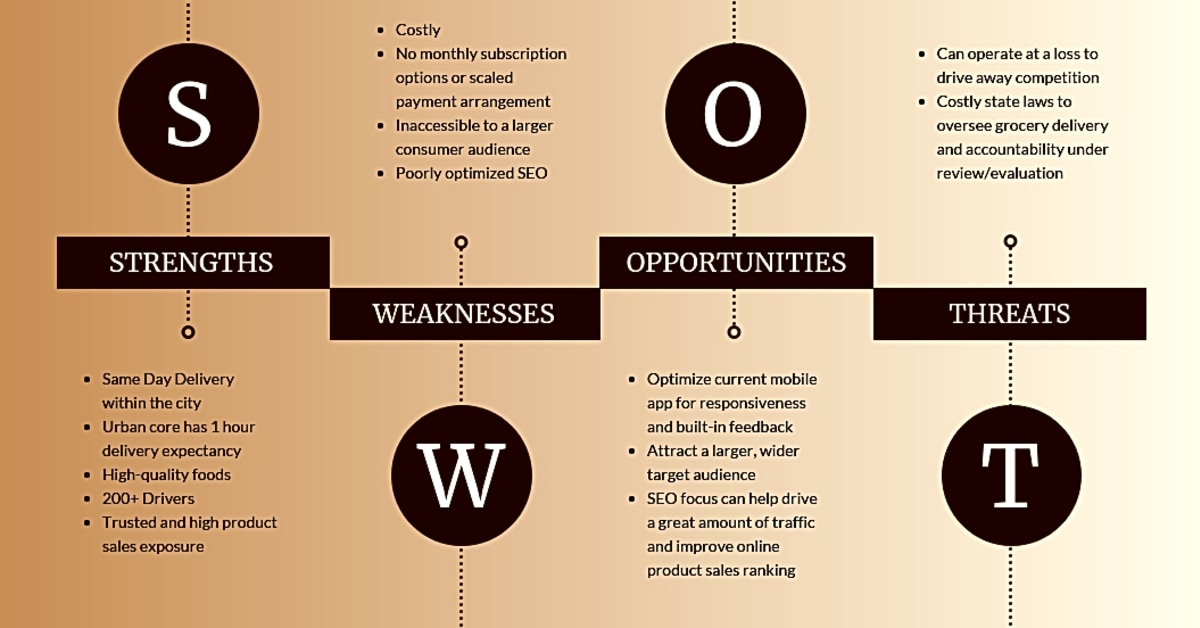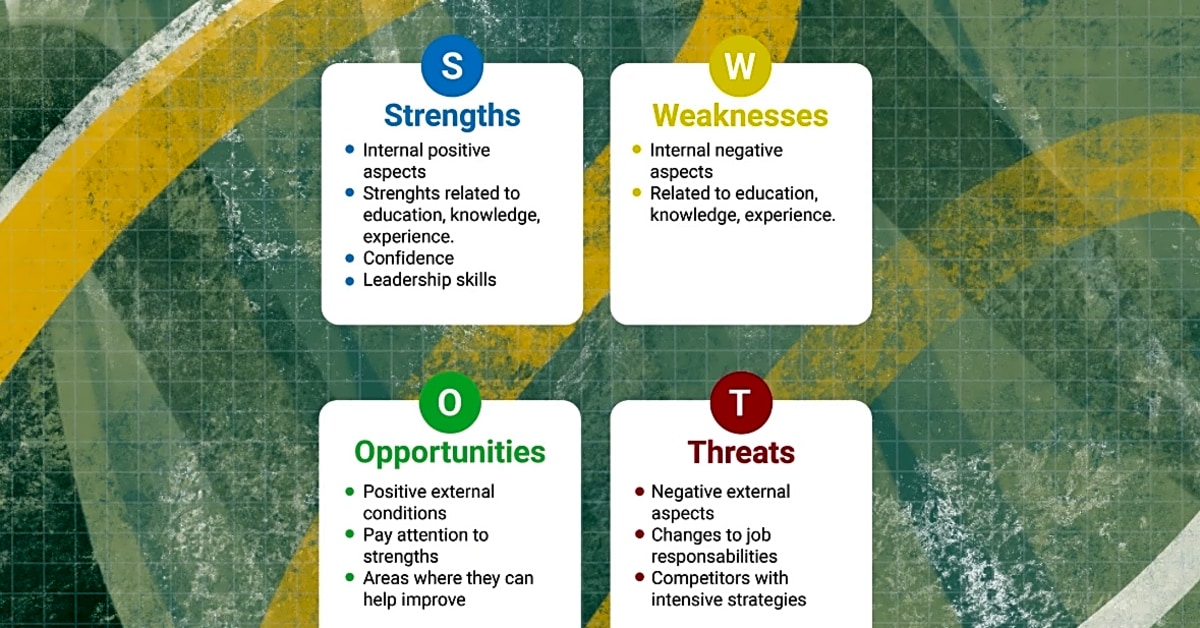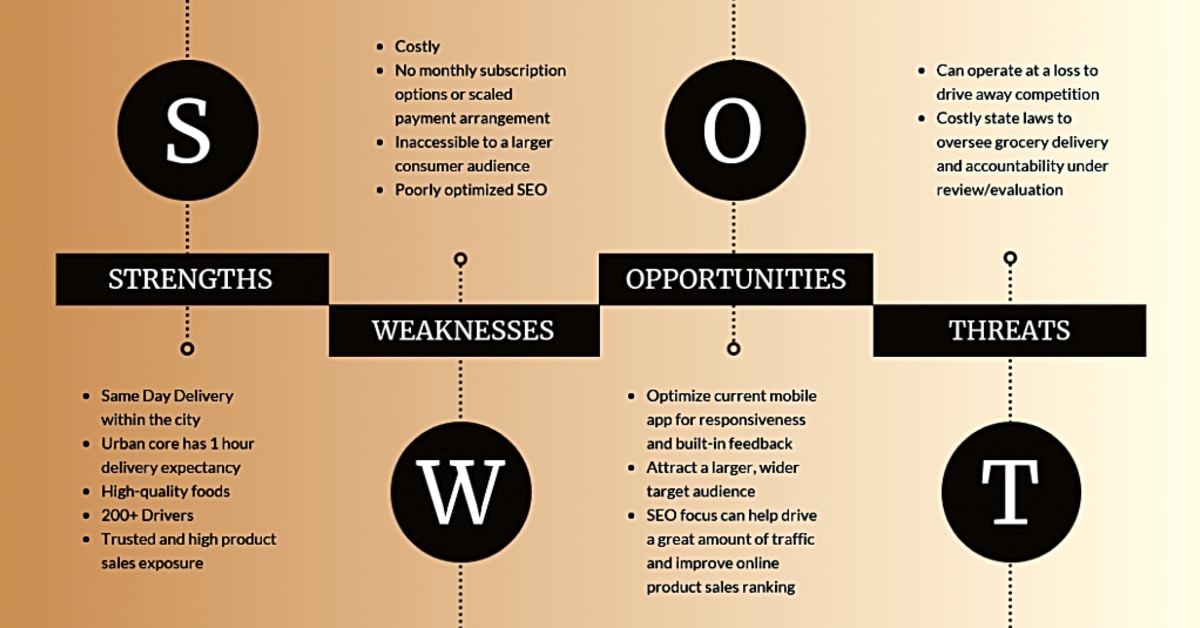SWOT analysis is a powerful tool used in business and strategic planning to evaluate the Strengths, Weaknesses, Opportunities, and Threats of an organization. It provides a comprehensive framework for understanding the internal and external factors that can impact a company’s success. Whether you’re a small business owner, a department head, or a consultant, understanding the purpose of SWOT analysis is essential for making informed decisions. In this article, we will explore the purpose of SWOT analysis and how it can be used to gain a competitive advantage in the market. So, let’s dive in and discover the power of SWOT analysis.
To begin, it is important to understand that SWOT stands for strengths, weaknesses, opportunities, and threats. It is a strategic planning tool that helps businesses identify internal strengths and weaknesses, as well as external opportunities and threats in their market. By conducting a SWOT analysis, companies can gain a better understanding of their current position and make informed decisions on how to move forward.
When discussing the purpose of SWOT analysis, it is crucial to mention its role in strategic planning. This process involves setting goals and objectives for the company and determining the actions needed to achieve them. By conducting a SWOT analysis, businesses can identify their strengths and weaknesses, which can then be leveraged or addressed in the strategic planning process. For example, if a company’s analysis reveals a strong customer base as a strength, they may decide to focus on customer retention and loyalty in their strategic plan.
Another aspect of business strategy that is closely linked to SWOT analysis is market analysis. This involves researching and understanding the market in which a company operates. By conducting a SWOT analysis, businesses can gain insights into their competitors and the overall market environment. This information can then be used to make informed decisions on how to position their products or services within the market.
Furthermore, SWOT analysis can also help with risk management. By identifying potential threats and weaknesses, businesses can take proactive measures to mitigate these risks and protect their company. For example, if a company’s analysis reveals a potential threat from new competitors, they can take steps to strengthen their competitive advantage and maintain their market share.
Lastly, conducting a SWOT analysis can also aid in managing organizational growth. As companies expand and evolve, it is important to regularly assess their strengths and weaknesses in order to ensure continued success. A SWOT analysis can help businesses identify areas of improvement and develop strategies for sustainable growth.
Overall, the purpose of SWOT analysis is to provide businesses with a comprehensive understanding of their internal and external environment. This information can then be used to make informed decisions and improve overall performance. By incorporating SWOT analysis into their business strategy, companies can gain a competitive advantage and drive growth.
Integrating SWOT Analysis into Strategic Planning
One of the key benefits of conducting a SWOT analysis is its ability to inform and guide the strategic planning process. By identifying strengths, weaknesses, opportunities, and threats, companies can gain a better understanding of their current position in the market and determine the best course of action for future success.
During the strategic planning process, a SWOT analysis can be used to evaluate potential strategies and determine which ones align with the company’s strengths and take advantage of opportunities while mitigating weaknesses and addressing potential threats. This integration of SWOT analysis allows companies to make informed decisions and develop realistic goals and objectives.
In addition, SWOT analysis can also be used to identify any gaps or areas for improvement in the company’s current strategy. By understanding potential weaknesses and threats, companies can make necessary adjustments to strengthen their overall strategy and ensure long-term success.
Leveraging SWOT Analysis for Market Analysis
The purpose of SWOT analysis goes beyond just understanding a company’s internal strengths and weaknesses. It also plays a crucial role in understanding the market and positioning products or services.
By conducting a SWOT analysis, companies can gain valuable insights into the external opportunities and threats that may impact their business. This can include factors such as market trends, customer preferences, and competitive landscape.
With this information, businesses can make more informed decisions about their marketing strategies and product positioning. They can identify areas where they can capitalize on their strengths and take advantage of opportunities, while also identifying potential threats and developing strategies to mitigate them.
Additionally, SWOT analysis can help companies understand their target market better by identifying their customers’ needs, wants, and pain points. This can aid in creating targeted marketing campaigns and developing products or services that align with the market demand.
Overall, leveraging SWOT analysis for market analysis allows businesses to gain a deeper understanding of their industry, competition, and target market. It serves as a powerful tool for developing effective business strategies that drive success in today’s competitive landscape.
Utilizing SWOT Analysis for Organizational Growth
One of the main purposes of a SWOT analysis is to identify and assess an organization’s strengths, weaknesses, opportunities, and threats. By regularly reassessing these factors, companies can gain valuable insights into their current position and make informed decisions for future growth.
Regularly conducting a SWOT analysis allows organizations to stay on top of changing market conditions and adapt their strategies accordingly. By identifying and leveraging strengths, companies can maintain their competitive advantage and capitalize on opportunities for growth. Similarly, by addressing weaknesses and mitigating threats, organizations can minimize potential risks and maintain their position in the market.
A SWOT analysis also helps companies identify any gaps in their business operations or processes. By understanding these gaps, organizations can make necessary improvements and enhancements to drive sustainable growth. In today’s rapidly evolving business landscape, it is crucial for companies to continuously reassess their strengths and weaknesses in order to remain competitive and achieve long-term success.
Mitigating Risks with SWOT Analysis
One of the key benefits of conducting a SWOT analysis is its ability to help with risk management. By evaluating the strengths, weaknesses, opportunities, and threats facing a company, businesses can identify potential risks and vulnerabilities that may impact their success. This comprehensive analysis allows companies to proactively address these risks and develop strategies to mitigate them.
For instance, during the SWOT analysis process, companies may identify potential weaknesses or threats in their operations, such as outdated technology or intense competition. By recognizing these risks, businesses can take steps to address them before they become major issues. This could involve investing in new technology or implementing marketing strategies to stand out from competitors.
In addition, the SWOT analysis can also help businesses identify potential opportunities for growth and development. This could include new markets to enter or partnerships to form. By taking advantage of these opportunities, companies can reduce their overall risk and increase their chances of success.
Overall, conducting a SWOT analysis not only helps businesses identify potential risks, but also provides them with a roadmap for addressing and mitigating those risks. By regularly conducting this analysis, companies can stay ahead of potential threats and improve their chances of achieving long-term success in a competitive business landscape.
Understanding the Elements of SWOT Analysis
When conducting a SWOT analysis, it is important to understand the four key elements that make up this framework: Strengths, Weaknesses, Opportunities, and Threats. Each of these components plays a crucial role in determining a company’s current position and future potential.
Strengths: This element focuses on the internal factors that give a company an advantage over its competitors. These can include unique skills or resources, a strong brand reputation, or a loyal customer base. By identifying and leveraging strengths, a company can build upon its competitive advantage and further solidify its position in the market.
Weaknesses: On the other hand, weaknesses refer to internal factors that put a company at a disadvantage compared to its competitors. These can include lack of resources, outdated technology, or poor management. By acknowledging and addressing weaknesses, companies can work towards improving their overall performance and minimizing potential threats.
Opportunities: This element focuses on external factors that present potential growth opportunities for a company. These can include changes in consumer trends, emerging markets, or new technologies. By identifying and capitalizing on opportunities, companies can stay ahead of the curve and continue to grow.
Threats: The final element of SWOT analysis looks at external factors that could potentially harm a company’s performance. These can include competition, economic downturns, or changing regulations. By being aware of potential threats, companies can proactively plan and mitigate any potential risks.
By understanding each component of SWOT analysis and how they contribute to the overall purpose, companies can gain valuable insights into their current position and develop effective strategies for future success.
In conclusion, SWOT analysis plays a crucial role in business strategy by providing companies with a comprehensive understanding of their internal strengths and weaknesses, as well as external opportunities and threats. By incorporating this tool into strategic planning, market analysis, risk management, and organizational growth, businesses can make informed decisions and stay ahead of the competition. As the saying goes, knowledge is power, and conducting a SWOT analysis can provide businesses with the knowledge they need to succeed.


